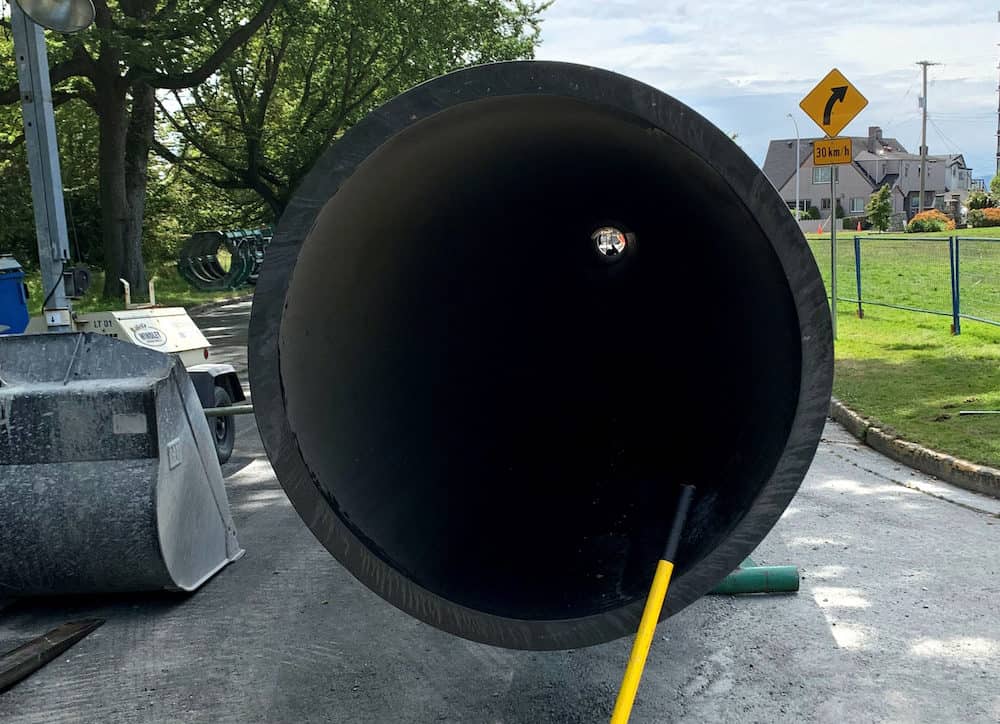Guide to Standard Dimension Ratio (SDR)

The standard dimension ratio (SDR)—also referred to as the standard dimensional ratio—is a measurement and method often used by pipe manufacturers to rate the working pressure capacity of a pipe. It is calculated by determining the relationship of the pipe’s outside diameter to its minimum wall thickness. The higher the calculated SDR, the lower the amount of pressure it can handle since the pipe minimum wall thickness is reduced in proportion to the outside diameter remaining the same. The lower the calculated SDR, the higher the amount of pressure it can handle since the wall thickness is thicker in proportion to the pipe diameter. As an example, SDR17 has a thinner wall and lower pressure class than an SDR 11. Knowing and understanding this value is essential for many applications, including, but not limited to, the following:
• When calculating the internal pressure inside of a pipe system
• When inserting objects into a pipe system such as ID stiffeners for compression fittings
• When determining the tensile strength of a pipe under high stress
• When assessing the compressive strength of a pipeline undergoing burial
What’s the Difference Between SDR and DR?
The terms “standard dimension ratio” (SDR) and “dimension ratio” (DR) refer to the same ratio—i.e., the ratio of a pipe’s average outside diameter to its minimum wall thickness. They were developed to help standardize how industry professionals indicated pipe specifications internationally, which helped minimize confusion among sourcing agents and end-users. The key difference between them is that DR is used for any number, while SDR is used for a particular series of numbers ( 17, 11, 9, 7, etc.) This series is based on a geometric progression pattern and was developed by Charles Renard, a French engineer. If a pipe’s ratio isn’t one of Renard’s Numbers, it can’t be referred to as SDR[X]; it can only be called DR[X].
As mentioned above, higher SDR/DR values mean the pipe has a lower minimum wall thickness with an unchanged outer diameter ratio, while lower SDR/DR values mean the pipe has a thicker minimum wall thickness with an unchanged outer diameter ratio. This means that two pipes with the same OD but different DR numbers would have different wall thicknesses. For example, a 14” OD pipe with a wall thickness of 1.273 inches would have a DR of 11, while a 14” pipe with a wall thickness of 0.824 would have a DR of 17.
How to Determine the SDR of a Pipe
The SDR ratio, which is sometimes denoted as OD/t, has a relatively simple formula:
Standard Diameter Ratio = OD/mw
The term “OD ” refers to the average outside diameter of the pipe, while the term “mn” refers to the minimum wall thickness of the pipe.
If you do not have the numbers needed to make the calculation on hand, you can use a round micrometer to physically measure the open end of the pipe. Alternatively, you can check the product markings to see if the DR/SDR is indicated on the pipe.
Learn More About SDR and Other Important Pipe Info at WL Plastics
If you want additional information about standard diameter ratios and how they relate to pipes, ask the experts at WL Plastics. Equipped with extensive experience manufacturing HDPE pipes for use in a wide range of applications, we have the knowledge and skills to answer and address any questions or concerns you may have about pipes.
